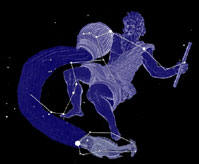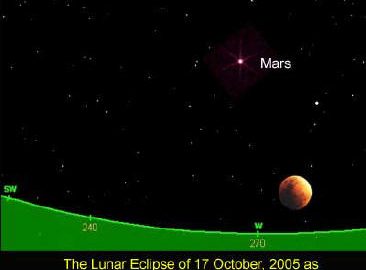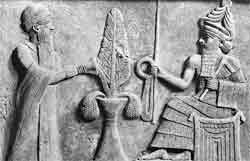Bernadette Brady
March 2005
Astrologers who are engaged in the idea of astrological ages wait or look for the spring equinox to occur within the stars of Aquarius to herald the dawning of the Age of Aquarius. The different debates on this topic are generally concerned with the precise location of the beginning of the constellation of Aquarius, so it is interesting to revisit this question with an eye to the sky.
The Egyptians built their religion largely upon the visual phenomena of the starry sky and embedded the equinox into it. For them, the stars which were rising before the sun on the morning of the equinox were the stars which mixed their energy with that of Ra, the Sun god. These stars joined with Ra and rode the Fiery Boat of the Sun. The star’s or constellation’s symbolism (or nature) was thought to be used by Ra as the vehicle in which he could express himself in that epoch (see Sellers,1992:33 and Lockyer, 1992).
However, with the decline of the Egyptian culture and the acceptance that the sky could be organised into twelve equal slices, there was a two-fold change in the perception of the equinox. The visual and philosophical elements were totally removed; and the stars which the Egyptians saw riding the Boat of the Sun, and thus becoming the vehicle or manifestation of Ra in their world, were ignored. This philosophy was replaced by focusing solely on the position of the sun and its actual location. No longer did the sun sit amongst the stars, nor was it connected with the stars rising before it. Instead the sun’s actual position became part of the mathematical twelve-fold division of the ecliptic. The sun now stood alone, free of the stars, free of their influence, riding its own boat alone in the sky.

Within this solar model, which is now the traditionally-accepted view, when the sun, at the equinox, moves into the Aquarius zone (300 of Aquarius) of the sky, the date is 2597 C.E. The debate concerning this date is on the value of the slippage between the stars and the tropical zodiac. But we can add to this debate and question the very model itself, for I find that my deep instincts as an astrologer resists the idea that if there are great astrological ages, then they are neatly and evenly lined up like chocolates in a box. Life is never as simply as that. Life is more organic. The world does not change on cue and the sun does not rule alone.
So, if only for curiosity’s sake, let us return to the original idea of the stars rising before the sun and recognise that it is these stars which link their symbolism with that of the solar entity of Ra. Let us reconstruct and look at some ancient skies and grapple with the problems of constellations which are not equal in size but instead overlap each other, and other many shades of grey when dealing with a visually-rich environment.
To observe stars rising before the sun, logically the sun needs to be below the horizon in order for the stars to be seen. Once the sun moves to within 60 of the horizon, the sky becomes too light to see the stars. Therefore the following star maps have all been produced with the sun 80 below the horizon (Note: when the sun is between 120 and 60 of the horizon, it is in the period known as nautical twilight).
The following sky maps have been constructed in Starlight using a latitude of 400 North.
5000 B.C.E. – The Age of the Bull
At around 5000 B.C.E we have the following sky:

The sun is below the horizon about to reach 0 Aries (the intersection of the ecliptic and the equator which is not shown in this image) which is the equinox point. At this time the sun is actually amongst the stars of the constellation Gemini and we can see the constellation Taurus charging along above the horizon, a position it occupied for about 2500 years. The Egyptians had various important cults of the bull, the most well-known being the Apis bull. In Mesopotamia in this era, the mythic figure of Gilgamesh slew a god-bull which may well be a myth based on the phenomenon of the bull of the sky being seen to slip lower and lower below the horizon from one equinox to the next. However, it can be seen that in this epoch Taurus the bull is riding in the Boat of the Sun.
2000 B.C.E. – Pisces and a brief Aries
Three thousand years later, due to the movement of precession, we have a different image. Taurus has now slipped totally below the horizon and the stars rising before the equinox dawn are those Aries and the two fishes of Pisces.
This was the sky view of 2000 BCE. In the mathematical model this is known as the Age of Aries the ram. The constellation Aries is just visible above the horizon but it is being overpowered by the large constellation Pisces. The blood of the lamb, or ram, now takes over from the blood of the bull but the domination of Pisces is visually obvious. This could imply a short Aries epoch, maybe just long enough for monotheism (the Aries idea of only one true god) to take a firm hold on the expression of Ra.

0001 C.E. – Pisces still rules
Moving another 2000 years later to the year 0001 C.E., we have yet again another sky view. In the thinking of the traditional mathematical system, this era is the dawning of the Age of Pisces. In the sky map we can see the constellation Pisces is still dominating the predawn sky with both fishes reaching up above the horizon. But instead of this being the dawn of an age of Pisces, the visual phenomenon indicates that the age had already been riding the Boat of the Sun for a possible 400 to 500 years, if not longer.

Indeed in this model we could hypothesis that the Age of Pisces may be more closely related not to the birth of Christ (its traditional starting point) but rather to the era of Plato (427-347 B.C.E.) and Aristotle. These are two of the most inspirational and influential minds that humanity has produced, for it was they who laid the foundations for the development of religion, philosophy and science for the next 2000 years. Indeed Plato still shapes our thinking and our lives and could justifiably lay claim to be the herald of the age of Pisces. Or maybe it was the great blind poet, Homer (c.7 – 8th century B.C.E.) whose works continue to occupy a central position in the self-definition of Western culture.
2000 CE – the Modern Era
Leaping another 2000 years onward and moving to our modern era, we have a different sky again. Pisces has all but disappeared, yet as we can see, Aquarius has already begun to slip down below the horizon at the dawn of the equinox.

Visually we are already deep into the Age of Aquarius which may have started in the 15th , 16th or 17th centuries which, interestingly enough, did produce a flowering of thought, now labelled in history as the beginning of the modern era. It gave rise to the Renaissance, saw the emergence of new political systems and heralded the birth of technology by putting an effective end to Aristotelian thinking in science. Encounters with the New World also occurred this era. So it is easy to suggest that this remarkable shift of thinking and awareness could have been symbolised by the constellation Aquarius riding in Boat of the Sun.
The whole question of the astrological ages has many issues and many debates and it is not a question which will ever have a single answer. However, by looking at the sky and letting the stars have their voice, an alternative position, another point of view can be gained which deeply challenges the ideas of the easy or unquestioning acceptance of the mono-solar mathematical model.

As we start to acknowledge the role of the whole sky in our astrology, then this is just one of the great cycles that we can revisit and explore by reconstructing ancient skies. There are others … but they will need to wait for another newsletter!
So the next time you think about the Age of Aquarius, be aware that in the early morning predawn light at the spring equinox, it is the stars of Aquarius which are currently standing on the horizon. Aquarius has been there for the last four or five centuries, pouring forth his water into the world and riding in the Boat of the Sun.
I will leave you to ponder these points as we move towards this spring equinox.
References:
Brady, Bernadette (1999). Predictive Astrology, the Eagle and the Lark. Maine, USA: Weiser
Lockyer, Norman.(1992). The Dawn of Astronomy. Kila, MT: Kessinger.
Sellers, J.B.(1992). The Death of the Gods in Ancient Egypt. London: Penguin




